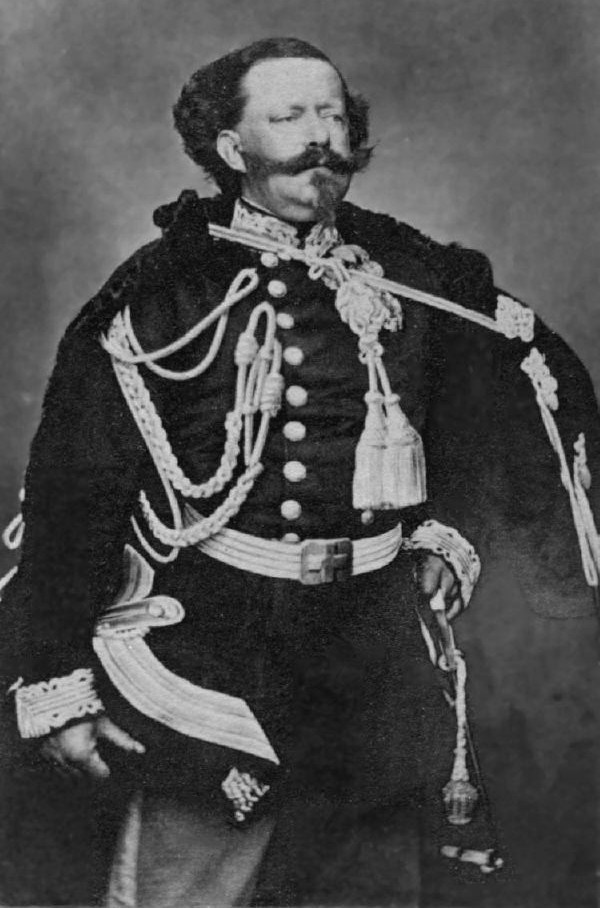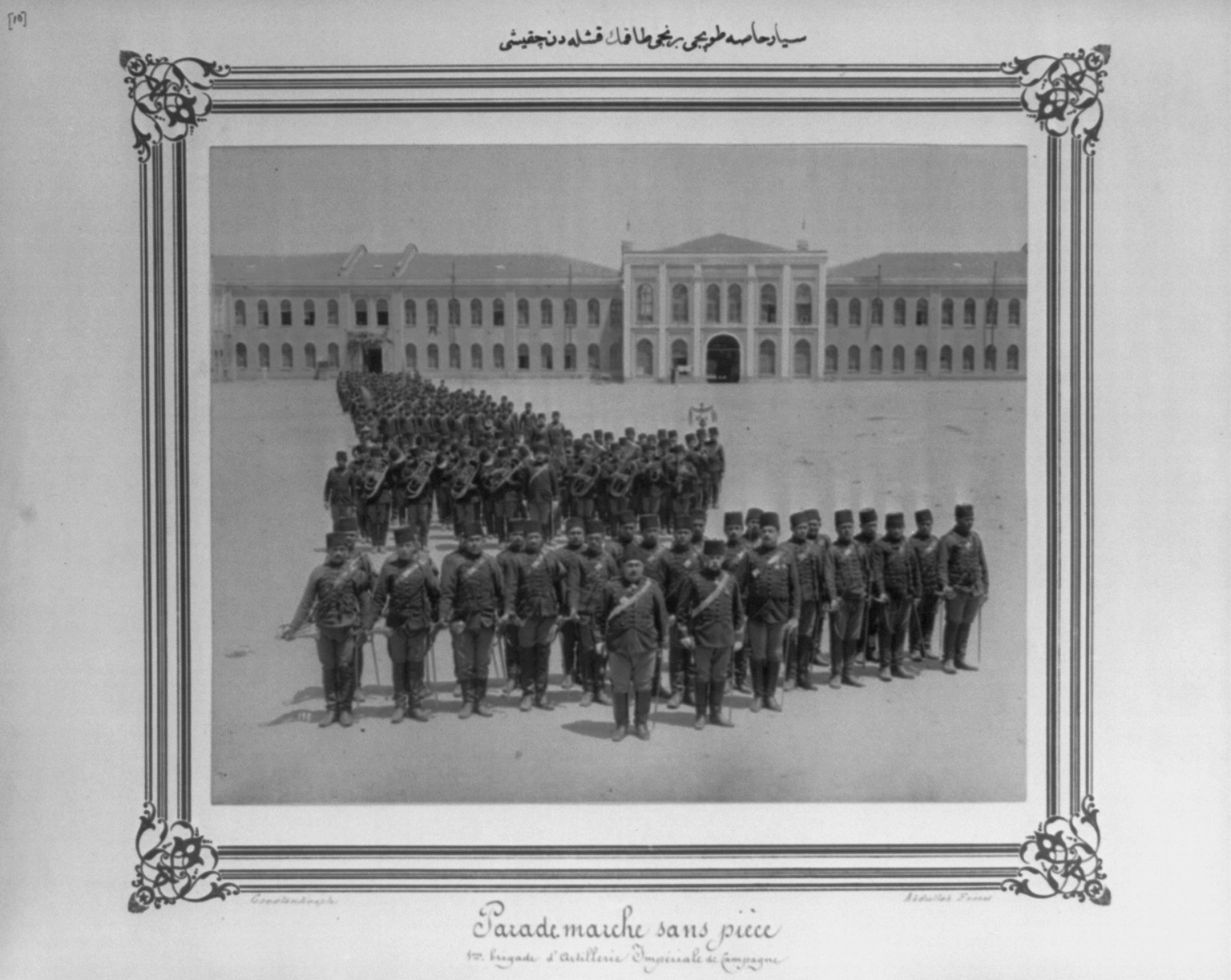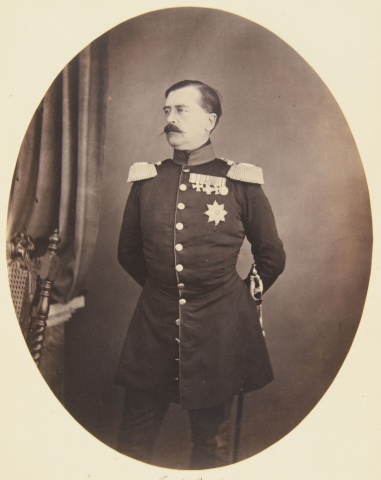|
Ећehzade Yusuf Izzeddin
Şehzade Yusuf Izzeddin ( ota, شهزادہ یوسف عزالدین; 29 September 1857 – 1 February 1916) was an Ottoman prince, the eldest son of Sultan Abdulaziz and his first wife Dürrünev Kadın. Early life and education Şehzade Yusuf Izzeddin was born on 29 September 1857 in the Dolmabahçe Palace. His father was Sultan Abdulaziz, who was then a prince, and his mother was Dürrünev Kadın, eldest daughter of Prince Mahmud Dziapş-lpa and his wife Princess Halime Çikotua. He had a full sister, Saliha Sultan, five years younger than him. He was brought up concealed in the villa of Kadir Bey, molla of Mecca, located in Eyüp. His birth was kept a secret until his father ascended the throne in 1861. Izzeddin's early education took place in the Prince's School, Dolmabahçe Palace. His tutors were Miralay Süleyman Bey, Ömer Efendi, Tophane Müfti Ömer Lutfi Efendi, Gazi Ahmed Muhtar Pasha, and Gürcü Şerif Efendi. He took his French lessons from the Sultan's head doc ... [...More Info...] [...Related Items...] OR: [Wikipedia] [Google] [Baidu] |
Dolmabahçe Palace
Dolmabahçe Palace ( tr, Dolmabahçe Sarayı, ) located in the Beşiktaş district of Istanbul, Turkey, on the European coast of the Bosporus strait, served as the main administrative center of the Ottoman Empire from 1856 to 1887 and from 1909 to 1922 (Yıldız Palace was used in the interim period). History Dolmabahçe Palace was ordered by the Empire's 31st Sultan, Abdülmecid I, and built between the years 1843 and 1856. Previously, the Sultan and his family had lived at the Topkapı Palace, but as the medieval Topkapı was lacking in contemporary style, luxury, and comfort, as compared to the palaces of the European monarchs, Abdülmecid decided to build a new modern palace near the site of the former Beşiktaş Sahil Palace, which was demolished. Hacı Said Ağa was responsible for the construction works, while the project was realized by architects Garabet Balyan, his son Nigoğayos Balyan and Evanis Kalfa (members of the Armenians, Armenian Balyan family of Ottoman cou ... [...More Info...] [...Related Items...] OR: [Wikipedia] [Google] [Baidu] |
Mehmed VI
Mehmed VI Vahideddin ( ota, Щ…ШЩ…ШЇ ШіШ§ШЇШі ''Meḥmed-i sГўdis'' or ''VaḥîdГј'd-DГ®n''; tr, VI. Mehmed or /; 14 January 1861 – 16 May 1926), also known as Ећahbaba () among the OsmanoДџlu family, was the 36th and last Sultan of the Ottoman Empire, reigning from 4 July 1918 until 1 November 1922, when the Ottoman Empire was dissolved after World War I and replaced by the Republic of Turkey on 29 October 1923. The brother of Mehmed V, he became heir to the throne in 1916, after the suicide of AbdГјlaziz's son, Ећehzade Yusuf Izzeddin, as the eldest male member of the House of Osman. He acceded to the throne after the death of Mehmed V. He was girded with the Sword of Osman on 4 July 1918 as the thirty-sixth ''padishah''. His father was Sultan Abdulmejid I, and his mother was GГјlistu KadД±n (1830–1865). She was of Georgian- Abkhazian origin, the daughter of Prince Tahir Bey Chachba, who was originally named Fatma Chachba. After her death, Mehmed was adopted by Ећay ... [...More Info...] [...Related Items...] OR: [Wikipedia] [Google] [Baidu] |
Victor Emmanuel II Of Italy
en, Victor Emmanuel Maria Albert Eugene Ferdinand Thomas , house = Savoy , father = Charles Albert of Sardinia , mother = Maria Theresa of Austria , religion = Roman Catholicism , image_size = 252px , succession1 = King of Sardinia and Duke of Savoy , reign1 = 23 March 1849 – 17 March 1861 , predecessor1 = Charles Albert , reg-type1 = , regent1 = , signature = Signatur Viktor Emanuel II..PNG Victor Emmanuel II ( it, Vittorio Emanuele II; full name: ''Vittorio Emanuele Maria Alberto Eugenio Ferdinando Tommaso di Savoia''; 14 March 1820 – 9 January 1878) was King of Sardinia from 1849 until 17 March 1861, when he assumed the title of King of Italy and became the first king of an independent, united Italy since the 6th century, a title he held until his death in 1878. Borrowing from the old Latin title ''Pater Patriae'' of the Roman emperors, the Italians gave him the epithet of '' Father of the Fatherland'' ( it, Padr ... [...More Info...] [...Related Items...] OR: [Wikipedia] [Google] [Baidu] |
Mahmud Nedim Pasha
Mahmud Nedim Pasha ( 1818 – 14 May 1883) was an Ottoman conservative statesman of ethnic Georgian background,Buб№rus AbЕ« Mannah (2001), ''Studies on Islam and the Ottoman Empire in the 19th century, 1826-1876'', p. 163. Isis Press, who served as Grand Vizier of the Ottoman Empire between 1871–1872 and 1875–1876. Biography He was the son of Mehmed Necib Pasha, a governor-general of Baghdad. After occupying various subordinate posts at the Porte, he became under-secretary of state for foreign affairs, governor-general of Damascus and Д°zmir (Smyrna), minister of commerce, and governor-general of Tripoli. He was also successively Minister of Justice and Minister of the Navy in 1869, and ultimately grand vizier (identical to a prime minister at this point in the Empire) twice from 1871 to 1872 and from 1875 to 1876. He was high in favour with Sultan AbdГјlaziz and fell much under the influence of General Nicholas Pavlovich Ignatiev, the forceful Russian ambassador ... [...More Info...] [...Related Items...] OR: [Wikipedia] [Google] [Baidu] |
Murad V
Murad V ( ota, مراد خامس, translit=Murâd-ı ḫâmis; tr, V. Murad; 21 September 1840 – 29 August 1904) was the Sultan of the Ottoman Empire who reigned from 30 May to 31 August 1876. The son of Abdulmejid I, he supported the conversion of the government to a constitutional monarchy. His uncle Abdulaziz had succeeded Abdulmejid to the throne and had attempted to name his own son as heir to the throne, which spurred Murad to participate in the overthrow of his uncle. However, his own frail physical and mental health caused his reign to be unstable and Murad V was deposed in favor of his half-brother Abdul Hamid II after only 93 days. Early life Murad V was born as Şehzade Mehmed Murad on 21 September 1840 in the Çırağan Palace in Istanbul. His father was Sultan Abdulmejid I, son of Sultan Mahmud II and Bezmiâlem Sultan. His mother was Şevkefza Kadın, an ethnic Georgian. In September 1847, aged seven, he was ceremoniously circumcised together with ... [...More Info...] [...Related Items...] OR: [Wikipedia] [Google] [Baidu] |
Second Army (Ottoman Empire)
The Second Army of the Ottoman Empire was one of the field army, field armies of the Ottoman Army. It was formed in the late 19th century during Ottoman military reforms. Order of battle, 1877 In 1877, it was stationed in what is now Bulgaria. It was composed of: *1st Infantry Division *2nd Infantry Division *Cavalry Division *field artillery regiment *fortress artillery regiment Upon mobilization for the Russo-Turkish War (1877–1878), the second army was split in two; these were named as Eastern Danube Army and Western Danube Army. Order of battle, 1908 After the Young Turk Revolution and the establishment of the Second Constitutional Era (Ottoman Empire), Second Constitutional Era on 3 July 1908, new government initiate a major military reform. Army headquarters were modernized. The army headquarter established in Adrianople. Its operational area was Thrace, the Dardanelles, and it had units in Europe and Asia Minor. It commanded the following active divisions: The S ... [...More Info...] [...Related Items...] OR: [Wikipedia] [Google] [Baidu] |
Alexandra Of Denmark
Alexandra of Denmark (Alexandra Caroline Marie Charlotte Louise Julia; 1 December 1844 – 20 November 1925) was Queen of the United Kingdom and the British Dominions, and Empress of India, from 22 January 1901 to 6 May 1910 as the wife of King-Emperor Edward VII. Alexandra's family had been relatively obscure until 1852, when her father, Prince Christian of Schleswig-Holstein-Sonderburg-Glücksburg, was chosen with the consent of the major European powers to succeed his second cousin Frederick VII as king of Denmark. At the age of sixteen Alexandra was chosen as the future wife of Albert Edward, Prince of Wales, the son and heir apparent of Queen Victoria. The couple married eighteen months later in 1863, the year in which her father became king of Denmark as Christian IX and her brother was appointed king of Greece as George I. Alexandra was Princess of Wales from 1863 to 1901, the longest anyone has ever held that title, and became generally popular; her style of dress ... [...More Info...] [...Related Items...] OR: [Wikipedia] [Google] [Baidu] |
Edward VII
Edward VII (Albert Edward; 9 November 1841 – 6 May 1910) was King of the United Kingdom of Great Britain and Ireland and Emperor of India, from 22 January 1901 until his death in 1910. The second child and eldest son of Queen Victoria and Prince Albert of Saxe-Coburg and Gotha, and nicknamed "Bertie", Edward was related to royalty throughout Europe. He was Prince of Wales and heir apparent to the British throne for almost 60 years. During the long reign of his mother, he was largely excluded from political influence and came to personify the fashionable, leisured elite. He travelled throughout Britain performing ceremonial public duties and represented Britain on visits abroad. His tours of North America in 1860 and of the Indian subcontinent in 1875 proved popular successes, but despite public approval, his reputation as a playboy prince soured his relationship with his mother. As king, Edward played a role in the modernisation of the British Home Fleet and the reorganis ... [...More Info...] [...Related Items...] OR: [Wikipedia] [Google] [Baidu] |
First Army (Ottoman Empire)
The First Army or First Guards Army of the Ottoman Empire ( Turkish: ''Birinci Ordu'' or ''Hassa Ordusu'') was one of the field armies of the Ottoman Army. It was formed in the middle 19th century during Ottoman military reforms. Formations Order of Battle, 1877 In 1877, it was stationed in Selimiye. It was composed of: *Infantry: Seven line regiments and seven rifle battalion.Ian Drury, Illustrated by Raffaele Ruggeri, ''The Russo-Turkish War 1877'', Men-at-Arms 277, Ospray Publishing Ltd., Reprinted 1999, , p. 35. **1st Regular Infantry Division (''Birinci Nizamiye Fırkası'')Edward J. Erickson, ''Defeat in Detail: The Ottoman Army in the Balkans, 1912-1913'', Westport, Praeger, 2003, p. 6. **2nd Regular Infantry Division (''İkinci Nizamiye Fırkası'') *Cavalry: Five line regiments and one Cossack brigade. **Cavalry Division (''Süvari Fırkası'') *Artillery: Nine field and three horse batteries, one İhtiyat regiment. **Artillery Division (''Topçu Fırkası'') *Engine ... [...More Info...] [...Related Items...] OR: [Wikipedia] [Google] [Baidu] |
Karl Anton, Prince Of Hohenzollern
, spouse = Princess Josephine of Baden , issue = Leopold, Prince of Hohenzollern Stephanie, Queen of Portugal Carol I, King of Romania Prince Anthony Prince Frederick Princess Marie, Countess of Flanders , house = Hohenzollern , father = Karl, Prince of Hohenzollern-Sigmaringen , mother = Marie Antoinette Murat , birth_date = , birth_place = Krauchenwies, Hohenzollern-Sigmaringen , death_date = , death_place = Sigmaringen, German Empire Prince Karl Anton of Hohenzollern-Sigmaringen (german: link=no, Karl Anton Joachim Zephyrinus Friedrich Meinrad FГјrst von Hohenzollern-Sigmaringen) (7 September 1811 – 2 June 1885) was the final Prince of Hohenzollern-Sigmaringen before the territory was annexed by Prussia in 1849 and Prime Minister of Prussia from 1858 to 1862, which made him the only Hohenzollern Prince to hold that post. His second son, Karl, became the first king of Romania. Life Karl Anton was the son of Karl, Princ ... [...More Info...] [...Related Items...] OR: [Wikipedia] [Google] [Baidu] |
Ећehzade Yusuf Izzeddin
Şehzade Yusuf Izzeddin ( ota, شهزادہ یوسف عزالدین; 29 September 1857 – 1 February 1916) was an Ottoman prince, the eldest son of Sultan Abdulaziz and his first wife Dürrünev Kadın. Early life and education Şehzade Yusuf Izzeddin was born on 29 September 1857 in the Dolmabahçe Palace. His father was Sultan Abdulaziz, who was then a prince, and his mother was Dürrünev Kadın, eldest daughter of Prince Mahmud Dziapş-lpa and his wife Princess Halime Çikotua. He had a full sister, Saliha Sultan, five years younger than him. He was brought up concealed in the villa of Kadir Bey, molla of Mecca, located in Eyüp. His birth was kept a secret until his father ascended the throne in 1861. Izzeddin's early education took place in the Prince's School, Dolmabahçe Palace. His tutors were Miralay Süleyman Bey, Ömer Efendi, Tophane Müfti Ömer Lutfi Efendi, Gazi Ahmed Muhtar Pasha, and Gürcü Şerif Efendi. He took his French lessons from the Sultan's head doc ... [...More Info...] [...Related Items...] OR: [Wikipedia] [Google] [Baidu] |
MГјnire Sultan (daughter Of Abdulmejid I)
Münire Sultan ( ota, منیرہ سلطان; "''brightness''" or "''brilliant''"; 9 December 1844 – 29 June 1862) was an Ottoman princess, daughter of Sultan Abdulmejid I and one of his consorts Verdicenan Kadın. Early life Münire Sultan was born on 9 December 1844 at the Topkapı Palace. Her father was Sultan Abdulmejid I, and her mother was Verdicenan Kadın, the daughter of Prince Kaytuk Giorgi Achba and Princess Yelizaveta Hanım. She was the eldest child of her mother. She had a brother of Şehzade Ahmed Kemaleddin, three years younger than her, and an adoptive sister, Mediha Sultan. First marriage Engagement In March 1854, a messenger from Istanbul announced the betrothal of Münire Sultan to Prince Ibrahim Ilhami Pasha, son of Abbas I of Egypt and his wife Mahivech Hanim. Large public celebrations were proclaimed and the viceroy was reported to be highly pleased with the news. Ibrahim Pasha sent her a solitaire ring, solitaire earrings and a briolette as her betrothal ... [...More Info...] [...Related Items...] OR: [Wikipedia] [Google] [Baidu] |






.jpg)

